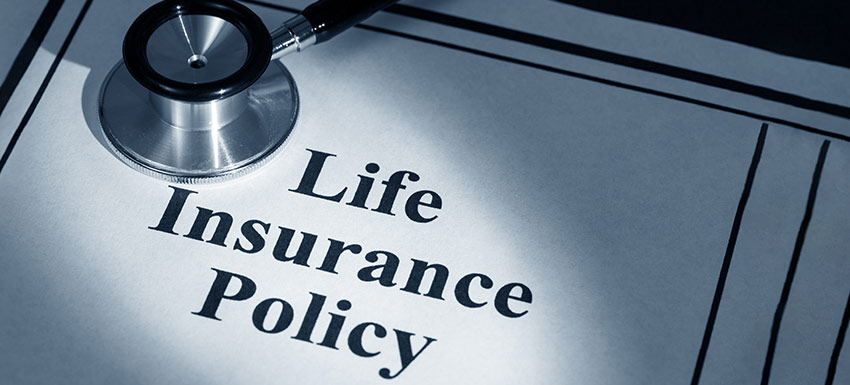
Life insurance is a contract between a life insurance company and a policy owner. A life insurance policy guarantees the insurer pays a sum of money to one or more named beneficiaries when the insured person dies in exchange for premiums paid by the policyholder during their lifetime.
NOTE:
- Life insurance is a legally binding contract that pays a death benefit to the policy owner when the insured person dies.
- For a life insurance policy to remain in force, the policyholder must pay a single premium upfront or pay regular premiums over time.
- When the insured person dies, the policy’s named beneficiaries will receive the policy’s face value, or death benefit.
- Term life insurance policies expire after a certain number of years. Permanent life insurance policies remain active until the insured dies, stops paying premiums, or surrenders the policy.
- A life insurance policy is only as good as the financial strength of the company that issues it. State guaranty funds may pay claims if the issuer can’t.
Types of Life Insurance
Many different types of life insurance are available to meet all sorts of needs and preferences. Depending on the short- or long-term needs of the person to be insured, the major choice of whether to select temporary or permanent life insurance is important to consider.
Term life Insurance
Term life insurance is designed to last a certain number of years, then end. You choose the term when you take out the policy. Common terms are 10, 20, or 30 years. The best term life insurance policies balance affordability with long-term financial strength.
Decreasing term life insurance is renewable term life insurance with coverage decreasing over the life of the policy at a predetermined rate.
Convertible term life insurance allows policyholders to convert a term policy to permanent insurance.
Renewable term life insurance provides a quote for the year the policy is purchased. Premiums increase annually and are usually the least expensive term insurance in the beginning.
Many term life insurance policies allow you to renew the contract on an annual basis once the term is up. This is one way to extend your life insurance coverage but since the renewal rate is based on your current age, premiums can rise precipitously each year. A better solution for permanent coverage is to convert your term life insurance policy into a permanent policy. This is not an option on all term life policies; look for a convertible term policy if this is important to you.
Permanent Life Insurance
Permanent life insurance stays in force for the insured’s entire life unless the policyholder stops paying the premiums or surrenders the policy. It’s more expensive than term.
Whole life insurance is a type of permanent life insurance. It accumulates a cash value in order to last the lifetime of the insured person. Cash-value life insurance also allows the policyholder to use the cash value for many purposes, such as a source of loans or cash or to pay policy premiums.
Universal life (UL) insurance is a type of permanent life insurance with a cash value component that earns interest. Universal life features flexible premiums. Unlike term and whole life, the premiums can be adjusted over time and designed with a level death benefit or an increasing death benefit.
Indexed universal life (IUL) is a type of universal life insurance that lets the policyholder earn a fixed or equity-indexed rate of return on the cash value component.
Variable universal life (VUL) insurance allows the policyholder to invest the policy’s cash value in an available separate account. It also has flexible premiums and can be designed with a level death benefit or an increasing death benefit.
Term vs. Permanent Life Insurance
Term life insurance differs from permanent life insurance in several ways but tends to best meet the needs of most people looking for affordable life insurance coverage. Term life insurance only lasts for a set period of time and pays a death benefit should the policyholder die before the term has expired. Permanent life insurance stays in effect as long as the policyholder pays the premium. Another critical difference involves premiums—term life is generally much less expensive than permanent life because it does not involve building a cash value.
Before you apply for life insurance, you should analyze your financial situation and determine how much money would be required to maintain your beneficiaries’ standard of living or meet the need for which you’re purchasing a policy. Also, consider how long you’ll need coverage for. For example, if you are the primary caretaker and have children 2 and 4 years old, you would want enough insurance to cover your custodial responsibilities until your children are grown up and able to support themselves.
You might research the cost of hiring a nanny and a housekeeper or using commercial child care and cleaning services, then perhaps add money for education. Include any outstanding mortgage and retirement needs for your spouse in your life insurance calculation. Especially if the spouse earns significantly less or is a stay-at-home parent. Add up what these costs would be over the next 16 or so years, add more for inflation, and that’s the death benefit you might want to buy—if you can afford it.
TIP
Burial or final expense insurance is a type of permanent life insurance that has a small death benefit. Despite the names, beneficiaries can use the death benefit as they wish.
What Affects Your Life Insurance Premiums and Costs?
Many factors can affect the cost of life insurance premiums. Certain things may be beyond your control, but other criteria can be managed to potentially bring down the cost before (and even after) applying. Your health and age are the most important factors that determine cost, so buying life insurance as soon as you need it is often the best course of action. After being approved for an insurance policy, if your health has improved and you’ve made positive lifestyle changes, you can request to be considered for a change in risk class. Even if it is found that you’re in poorer health than at the initial underwriting, your premiums will not go up. If you’re found to be in better health, then you your premiums may decrease. You may also be able to buy additional coverage at a lower rate than you initially did.
Life Insurance Buying Guide
Step 1: Determine How Much You Need to Think about what expenses would need to be covered in the event of your death. Things like mortgage, college tuition, and other debts, not to mention funeral expenses. Plus, income replacement is a major factor if your spouse or loved ones need cash flow and are not able to provide it on their own. There are helpful tools online to calculate the lump sum that can satisfy any potential expenses that would need to be covered.
Step 2: Prepare Your Application Life insurance applications generally require personal and family medical history and beneficiary information. You may need to take a medical exam and will need to disclose any preexisting medical conditions, history of moving violations, DUIs, and any dangerous hobbies, such as auto racing or skydiving. The following are crucial elements of most life insurance applications:
Age: This is the most important factor because life expectancy is the biggest determinant of risk for the insurance company.
Gender: Because women statistically live longer, they generally pay lower rates than males of the same age.
Smoking: A person who smokes is at risk for many health issues that could shorten life and increase risk-based premiums.
Health: Medical exams for most policies include screening for health conditions like heart disease, diabetes, and cancer and related medical metrics that can indicate risk.
Lifestyle: Dangerous lifestyles can make premiums much more expensive. Family medical history: If you have evidence of major disease in your immediate family, your risk of developing certain conditions is much higher.
Family medical history: If you have evidence of major disease in your immediate family, your risk of developing certain conditions is much higher.
Driving record: A history of moving violations or drunk driving can dramatically increase the cost of insurance premiums.
Standard forms of identification will also be needed before a policy can be written, such as your Social Security card, driver’s license, or U.S. passport.
Step 3: Compare Policy Quotes
When you’ve assembled all of your necessary information, you can gather multiple life insurance quotes from different providers based on your research. Prices can differ markedly from company to company, so it’s important to take the effort to find the best combination of policy, company rating, and premium cost. Because life insurance is something you will likely pay monthly for decades, it can save an enormous amount of money to find the best policy to fit your needs.
Benefits of Life Insurance
There are many benefits to having life insurance. Below are some of the most important features and protections offered by life insurance policies. Most people use life insurance to provide money to beneficiaries who would suffer a financial hardship upon the insured’s death. However, for wealthy individuals, the tax advantages of life insurance, including the tax-deferred growth of cash value, tax-free dividends, and tax-free death benefits, can provide additional strategic opportunities.
Avoiding Taxes
The death benefit of a life insurance policy is usually tax-free. Wealthy individuals sometimes buy permanent life insurance within a trust to pay estate taxes. This strategy helps to preserve the value of the estate for their heirs. Tax avoidance is a law-abiding strategy for minimizing one’s tax liability and should not be confused with tax evasion, which is illegal.
Who Needs Life Insurance?
Life insurance provides financial support to surviving dependents or other beneficiaries after the death of an insured policyholder. Here are some examples of people who may need life insurance:
- Parents with minor children. If a parent dies, the loss of their income or caregiving skills could create a financial hardship. Life insurance can make sure the kids will have the financial resources they need until they can support themselves.
- Parents with special-needs adult children. For children who require lifelong care and will never be self-sufficient, life insurance can make sure their needs will be met after their parents pass away. The death benefit can be used to fund a special needs trust that a fiduciary will manage for the adult child’s benefit.
- Adults who own property together. Married or not, if the death of one adult would mean that the other could no longer afford loan payments, upkeep, and taxes on the property, life insurance may be a good idea. One example would be an engaged couple who take out a joint mortgage to buy their first house.
- Seniors who want to leave money to adult children who provide their care. Many adult children sacrifice time at work to care for an elderly parent who needs help. This help may also include direct financial support. Life insurance can help reimburse the adult child’s costs when the parent passes away.
- Young adults whose parents incurred private student loan debt or cosigned a loan for them. Young adults without dependents rarely need life insurance, but if a parent will be on the hook for a child’s debt after their death, the child may want to carry enough life insurance to pay off that debt.
- Children or young adults who want to lock in low rates. The younger and healthier you are, the lower your insurance premiums. A 20-something adult might buy a policy even without having dependents if there is an expectation to have them in the future.
- Stay-at-home spouses. Stay-at-home spouses should have life insurance as they have significant economic value based on the work they do in the home. According to Salary.com, the economic value of a stay-at-home parent would have been equivalent to an annual salary of $162,581 in 2018.
- Wealthy families who expect to owe estate taxes. Life insurance can provide funds to cover the taxes and keep the full value of the estate intact.
- Families who can’t afford burial and funeral expenses. A small life insurance policy can provide funds to honor a loved one’s passing.
- Businesses with key employees. If the death of a key employee, such as a CEO, would create a severe financial hardship for a firm, that firm may have an insurable interest that will allow it to purchase a life insurance policy on that employee.
- Married pensioners. Instead of choosing between a pension payout that offers a spousal benefit and one that doesn’t, pensioners can choose to accept their full pension and use some of the money to buy life insurance to benefit their spouse. This strategy is called pension maximization.
- Those with preexisting conditions. Such as cancer, diabetes, or smoking. Note, however, that some insurers may deny coverage for such individuals, or else charge very high rates.
Important
Each policy is unique to the insured and insurer. It’s important to review your policy document to understand what risks your policy covers, how much it will pay your beneficiaries, and under what circumstances.
Considerations Before Buying Life Insurance
Research Policy Options and Company Reviews
Because life insurance policies are a major expense and commitment, it’s critical to do proper due diligence to make sure the company you choose has a solid track record and financial strength, given that your heirs may not receive any death benefit for many decades into the future. Investopedia has evaluated scores of companies that offer all different types of insurance and rated the best in numerous categories.
Consider How Much Death Benefit You Need
Life insurance can be a prudent financial tool to hedge your bets and provide protection for your loved ones in case of death should you die while the policy is in force. However, there are situations in which it makes less sense—such as buying too much or insuring those whose income doesn’t need to be replaced. So it’s important to consider the following.
What expenses couldn’t be met if you died? If your spouse has a high income and you don’t have any children, maybe it’s not warranted. It is still essential to consider the impact of your potential death on a spouse and consider how much financial support they would need to grieve without worrying about returning to work before they’re ready. However, if both spouses’ income is necessary to maintain a desired lifestyle or meet financial commitments, then both spouses may need separate life insurance coverage.
Know Why You’re Buying Life Insurance
If you’re buying a policy on another family member’s life, it’s important to ask—what are you trying to insure? Children and seniors really don’t have any meaningful income to replace, but burial expenses may need to be covered in the event of their death. Beyond burial expenses, a parent may also want to protect their child’s future insurability by purchasing a moderate-sized policy when they are young. Doing so allows that parent to ensure that their child can financially protect their future family. Parents are only allowed to purchase life insurance for their children up to 25% of the in-force policy on their own lives.
Could investing the money that would be paid in premiums for permanent insurance throughout a policy earn a better return over time? As a hedge against uncertainty, consistent saving and investing—for example, self-insuring—might make more sense in some cases if a significant income doesn’t need to be replaced or if policy investment returns on cash value are overly conservative.
How Life Insurance Works
A life insurance policy has two main components—a death benefit and a premium. Term life insurance has these two components, but permanent or whole life insurance policies also have a cash value component.
Death benefit. The death benefit or face value is the amount of money the insurance company guarantees to the beneficiaries identified in the policy when the insured dies. The insured might be a parent, and the beneficiaries might be their children, for example. The insured will choose the desired death benefit amount based on the beneficiaries’ estimated future needs. The insurance company will determine whether there is an insurable interest and if the proposed insured qualifies for the coverage based on the company’s underwriting requirements related to age, health, and any hazardous activities in which the proposed insured participates.
Premium. Premiums are the money the policyholder pays for insurance. The insurer must pay the death benefit when the insured dies if the policyholder pays the premiums as required, and premiums are determined in part by how likely it is that the insurer will have to pay the policy’s death benefit based on the insured’s life expectancy. Factors that influence life expectancy include the insured’s age, gender, medical history, occupational hazards, and high-risk hobbies.3 Part of the premium also goes toward the insurance company’s operating expenses. Premiums are higher on policies with larger death benefits, individuals who are at higher risk, and permanent policies that accumulate cash value.
Cash Value. The cash value of permanent life insurance serves two purposes. It is a savings account that the policyholder can use during the life of the insured; the cash accumulates on a tax-deferred basis. Some policies may have restrictions on withdrawals depending on how the money is to be used. For example, the policyholder might take out a loan against the policy’s cash value and have to pay interest on the loan principal. The policyholder can also use the cash value to pay premiums or purchase additional insurance. The cash value is a living benefit that remains with the insurance company when the insured dies. Any outstanding loans against the cash value will reduce the policy’s death benefit.
TIP
The policy owner and the insured are usually the same person, but sometimes they may be different. For example, a business might buy key person insurance on a crucial employee such as a CEO, or an insured might sell their own policy to a third party for cash in a life settlement.
Life Insurance Riders and Policy Changes
Many insurance companies offer policyholders the option to customize their policies to accommodate their needs. Riders are the most common way policyholders may modify or change their plans. There are many riders, but availability depends on the provider. The policyholder will typically pay an additional premium for each rider or a fee to exercise the rider, though some policies include certain riders in their base premium.
- The accidental death benefit rider provides additional life insurance coverage in the event the insured’s death is accidental.
- The waiver of premium rider relieves the policyholder of making premium payments if the insured becomes disabled and unable to work.
- The disability income rider pays a monthly income in the event the policyholder becomes unable to work for several months or longer due to a serious illness or injury.
- Upon diagnosis of terminal illness, the accelerated death benefit rider allows the insured to collect a portion or all of the death benefit.
- The long-term care rider is a type of accelerated death benefit that can be used to pay for nursing-home, assisted-living, or in-home care when the insured requires help with activities of daily living, such as bathing, eating, and using the toilet.
- A guaranteed insurability rider lets the policyholder buy additional insurance at a later date without a medical review.
Borrowing Money. Most permanent life insurance accumulates cash value that the policyholder can borrow against. Technically, you are borrowing money from the insurance company and using your cash value as collateral. Unlike with other types of loans, the policyholder’s credit score is not a factor. Repayment terms can be flexible, and the loan interest goes back into the policyholder’s cash value account. Policy loans can reduce the policy’s death benefit, however.
Funding Retirement. Policies with a cash value or investment component can provide a source of retirement income. This opportunity can come with high fees and a lower death benefit, so it may only be a good option for individuals who have maxed out other tax-advantaged savings and investment accounts. The pension maximization strategy described earlier is another way life insurance can fund retirement.
TIP
It’s prudent to reevaluate your life insurance needs annually or after significant life events, such as divorce, marriage, the birth or adoption of a child, or major purchases, such as a house. You may need to update the policy’s beneficiaries, increase your coverage, or even reduce your coverage.
Qualifying for Life Insurance
Insurers evaluate each life insurance applicant on a case-by-case basis, and with hundreds of insurers to choose from, almost anyone can find an affordable policy that at least partially meets their needs. In 2018 there were 841 life insurance and annuity companies in the United States, according to the Insurance Information Institute.
On top of that, many life insurance companies sell multiple types and sizes of policies, and some specialize in meeting specific needs, such as policies for people with chronic health conditions. There are also brokers who specialize in life insurance and know what different companies offer. Applicants can work with a broker free of charge to find the insurance they need. This means that almost anyone can get some type of life insurance policy if they look hard enough and are willing to pay a high enough price or accept a perhaps less-than-ideal death benefit.
Insurance is not just for the healthy and wealthy, and because the insurance industry is much broader than many consumers realize, getting life insurance may be possible and affordable even if previous applications have been denied or quotes have been unaffordable.
In general, the younger and healthier you are, the easier it will be to qualify for life insurance, and the older and less healthy you are, the harder it will be. Certain lifestyle choices, such as using tobacco or engaging in risky hobbies such as skydiving, also make it harder to qualify or lead to higher rates.
Who Needs Life Insurance?
You need life insurance if you need to provide security for a spouse, children, or other family members in the event of your death. Life insurance death benefits, depending on the policy amount, can help beneficiaries pay off a mortgage, cover college tuition, or help fund retirement. Permanent life insurance also features a cash value component that builds over time.
How Do You Qualify for Life Insurance?
To qualify for life insurance, you need to submit an application. But life insurance is available to almost anyone. However, the cost or premium level can vary greatly based on your age, health, and lifestyle. Some types of life insurance don’t require medical information but generally have much higher premiums and involve an initial waiting period before the death benefit is available.
How Does Life Insurance Work?
Life insurance works by providing a death benefit in exchange for paying premiums. One popular type of life insurance—term life insurance—only lasts for a set amount of time, such as 10 or 20 years. Permanent life insurance also features a death benefit but lasts for the life of the policyholder as long as premiums are paid.







